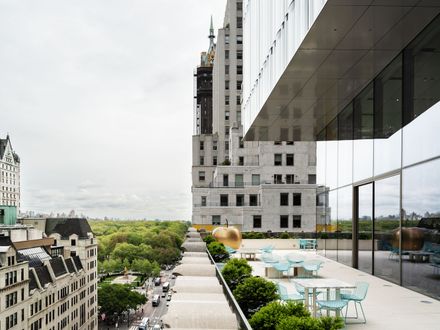MANUFACTURERS
Seele
STRUCTURAL ENGINEER
Wsp Norge, Wsp
MEP
Wsp Norge, Wsp
PARTNER IN CHARGE
Shohei Shigematsu
ASSOCIATE
Jake Forster
PROJECT ARCHITECTS
Caroline Corbett, Ninoslav Krgovic
IT/DATA/SECURITY:
Tiffany Co (In-house)
INTERIOR ARCHITECT
Peter Marino
EXECUTIVE ARCHITECT
Callison Rtkl
DESIGN TEAM
Marie-claude Fares, Richard Nelson-chow, Tommaso Bernabo Silorata, Clement Mathieu, Kevin Larson, Leone Di Robilant, Adam Vosburgh, Anahita Tabrizi, Avo Keuyalian, Jackie Woon Bae, Henrik Gjerstad, Cameron Fullmer, Ge Zhou, Patricio Fernandez Ivanschitz, Timothy Cheng, Mark Jongman- Sereno, Shary Tawil
CLIENT REP/PROJECT MANAGERS/COSTING
Mace Group
FACADE CONSULTANT
Heintges Consulting Architects & Engineers P.c
AV CONSULTANT
Theater Projects
ACOUSTICS
Henderson Engineers, Cerami Associates
SIGNAGE AND WAYFINDING
2x4
VERTICAL TRANSPORTATION
Edgett Williams Consulting Group
SUSTAINABILITY
Paladino & Co.
PHOTOGRAPHS
Floto+warner
YEAR
2023
LOCATION
New York, United States
CATEGORY
Office Buildings, Store
Tiffany & Co. is a New York icon and retail enterprise providing luxury goods ranging from stationery and everyday objects to fine jewelry.
A history of innovation and devotion to timeless beauty and pragmatism, underlines how the specialty design house shaped and re-shaped local and global retail landscape.
Tiffany’s flagship occupied 727 Fifth Avenue for over 80-years, establishing itself as a quintessential New York fixture.
Ironically, one’s experience or association of the flagship is often limited to the building’s most famed, film-location ground floor.
The renovation reimagines the flagship with a spectrum of interventions, from reprogramming to preservation and new spatial expressions.
727 Fifth Avenue presented 10-stories entirely dedicated to retail, at a scale that not dissimilar to the typical urban department store.
While a department store is inherently diverse, with a wide variety of brands in shop-in-shops, here, a single brand occupies the multi-story building.
How could the renovation break the potential monotony of shopping all Tiffany products? How can the potential of scale be maximized to provide a diverse experience?
Can the visitor be fully engaged through the entire building? How should a heritage brand in a historic building communicate a cohesive narrative? Can the center of activity gravity be shifted or distributed vertically?
The transformation begins with the reorganization and rezoning of retail programs for a more fluid circulation through the ground level and up all ten floors.
A more efficient infrastructure is established by moving and consolidating the core in alignment with the main revolving door entry and adding an elevator lobby that clarifies access to upper levels.
The addition of a dedicated exhibition, event, and clientele space on the roof of the original building is conceived as a new dimension to Tiffany’s retail ecosystem—a space to broadcast an evolving brand identity and host new initiatives.
The architecture is generated by an attitude towards luxury that’s persisted through Tiffany’s evolution—balance of aesthetic and practical sensibilities as a means of innovation, here, we resolve both characteristics programmatically and formally.
A clear box stacks two floors, exhibition and event, within, making a unified form with potential for two programs to work together or independently.
The straight, vision glass façade offers panoramic views out and sets back from the edge of the existing building envelope to make a wraparound terrace overlooking the city and Central Park.
Above, the client floor extends out and over the terrace and is encased by a slumped glass façade. Unlike traditional curved glass which typically consists of two pieces of glass that are offset shapes of one another, the façade combines flat and slumped glass to leverage the two different qualities and distinct advantages.
The slumped glass is structurally favorable and requires less vertical support while creating a mirrored effect that provides privacy from the exterior. The flat low-e glass optimizes energy performance while minimizing reflections from the interior to preserve transparency for views out onto the city.
Resembling a soft curtain, the façade is an antidote to the severe glass buildings that tower over the Landmark that contributes a different texture to the sober form of the existing limestone building and glass box addition.
The new jewelry box (or “blue box” when lit at night in Tiffany Blue) floating above the original structure is a symbolic start to a renewed identity of the flagship and the brand.

























